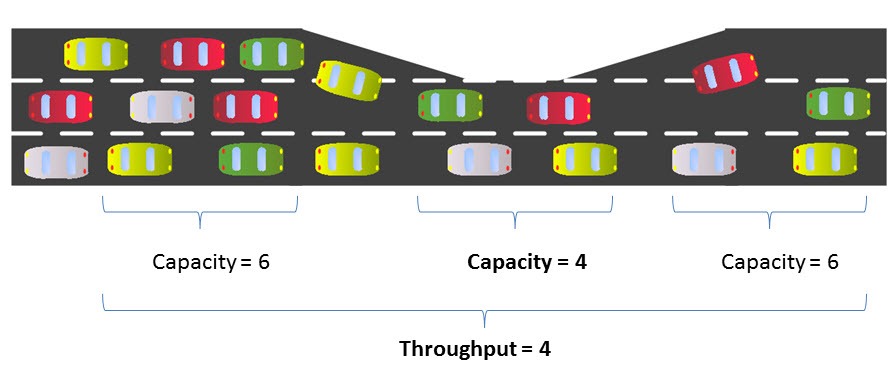What a Bottleneck Is
Before understanding how to identify bottlenecks in a process you must have a clear understanding about what is actually meant by a bottleneck. Basically, bottlenecks are obstacles or hurdles on account of which a process slows down or gets delayed. Just as the neck of a physical bottle will restrict the pace of water going through it, bottlenecks in a process can limit the working hours, information flow, materials, and products. Generally, they are related with manufacturing and logistics. However, bottlenecks can take place in any process where in order to keep the work flowing, links of people as well as tasks depend on each other.
Types of Bottlenecks in a Process
There are two kinds of bottlenecks in a process, long-term and short-term bottlenecks. Long-term bottlenecks are most usually those that keep on occurring in a company for a long duration and they have not been touched. It can include the postponements that usually occur in financial auditing, monthly payroll handling, or inappropriate leave management of organization’s personnel. On the other hand, short-term bottlenecks are those that take place all of a sudden owing to inadequate planning and automation deficiency. It can include an official person unexpectedly going on leave, inadequate knowledge about a venture or a missing file.
Identification of Bottlenecks in a Process
There are different signs that can help in the identification of bottleneck in a process. The first sign can be long wait times such as organization work being postponed for the reason that we are waiting for a report, a product, or additional information. Likewise, if materials occupy time in the making of different stages in a manufacturing process then it can be a warning sign of a bottleneck. Backlogged work can also be another sign of a bottleneck in a process. High level of stress at work also symbolizes bottlenecks. When a person feels incapable of handling their part in a process, or recognizing that he or she may be delaying the work of other members, then it can be quite annoying and result in discomfort.
Furthermore, creating a map for all processes in a business and marking their time can be very helpful in the identification of bottlenecks. There is clearly a bottleneck when the duration is time-consuming as compared to the estimated time. Process mapping and observing them from the outer side gives us the opportunity to evaluate their complete performance. By means of carefully analyzing our processes we may discover some surprising opportunities for improvement. In case of uncertainty that by what means we should map our processes and overcome the difficulties; we must enquire into our business competition. We must ask how their processes appear and by what means they overcome the obstacles experienced by them? This will help is maintaining and retaining our competitive advantage. Moreover, flow Charts can be very helpful in this regard for presenting all stages in a process which are easy to identify by means of a diagram that can be understood easily. Process measuring in this approach makes it quite stress-free to trace where things are becoming problematical and result in a bottleneck.
Another approach to identify a bottleneck is by means of throughput. In a production line the throughput of is directly related to the bottleneck machine’s productivity. This specific feature allows us to classify the key bottleneck in a process. Output increase of a machine has minor influence on the complete production which is not a bottleneck, as the throughput is restricted due to a bottleneck. If the throughput of all machines is changed one by one, the bottleneck can be identified in the machine that mostly influences the overall output.
In addition to that the specific process in a manufacturing line that accumulates the most time-consuming queue is a sign of a bottleneck. Accumulation method of finding bottlenecks in a process is specifically handy for production lines in which separate articles are being processed, for instance a bottling line. It can be easily discovered where the items are accumulating and the machine can be identified having insufficient capacity, stops working repeatedly or has a worker requiring proper training. This situation gets more challenging when queues occur at a number of process stages and additional methods are required for classifying the most serious bottleneck.
A more useful and comprehensive problem-solving instrument which can help us is the “5 Whys technique”. It begins by defining the problem that needs to be addressed in the given situation. After that, we ask our self why this particular problem is taking place which we want to address now. At all steps we keep probing “Why?” until the root cause of the problem is discovered. The concluding response pinpoints the root cause of our problem, and offers an initial topic that needs to be focused and addressed for solving the problem.






